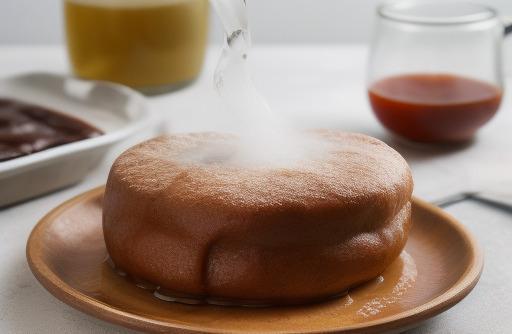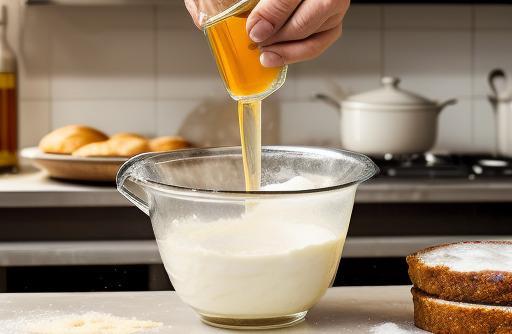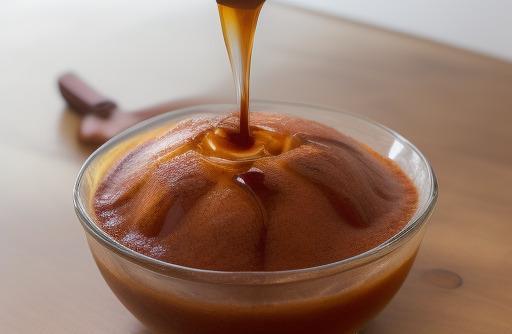Best Substitutes For Vinegar In Baking

Vinegar is a versatile ingredient that adds acidity and tangy flavors to various baked goods. It acts as a leavening agent, enhances flavor, and helps in tenderizing the dough. However, there may be times when you run out of vinegar or need to find an alternative due to dietary restrictions or personal preference. In this article, we will explore the best substitutes for vinegar in baking, along with tips on how to choose the right substitute and cooking with these alternatives.
Key Takeaways
- Vinegar is a commonly used ingredient in baking, providing acidity, flavor enhancement, and leavening properties.
- If vinegar is unavailable or not preferred, there are several substitutes that can be used in baking, such as lemon juice, lime juice, buttermilk, yogurt, and cream of tartar.
- When selecting a substitute, consider the desired flavor profile and acidity level of the original recipe.
- Cooking with substitutes for vinegar may require slight adjustments in quantities or other ingredients.
- Various baking recipes can be adapted to include substitutes for vinegar, such as cakes, cookies, and bread.
Why You Need A Substitute For Vinegar In Baking
There are several reasons why you might need a substitute for vinegar in baking. It could be that you’ve run out of vinegar and need an alternative to complete your recipe. Alternatively, you might have dietary restrictions or personal preferences that prevent you from using vinegar in your baking. Whatever the reason, having a suitable substitute on hand can save the day and ensure that your baked goods turn out just as delicious.
Types Of Substitutes For Vinegar In Baking

When looking for substitutes for vinegar in baking, it’s important to consider the role that vinegar plays in the recipe. Vinegar provides acidity, flavor, and contributes to the leavening process. Here are some substitutes that can fulfill these functions:
1. Lemon Juice
Lemon juice is an excellent substitute for vinegar in baking due to its similar acidic properties. The tangy flavor of lemon juice can mimic the acidity of vinegar and enhance the taste of various baked goods. Use an equal amount of lemon juice as a substitute for vinegar in a recipe.
2. Lime Juice
Like lemon juice, lime juice can be used as a substitute for vinegar in baking. It provides a slightly different flavor profile, adding a fresh and citrusy taste to your baked goods. Replace vinegar with an equal amount of lime juice in your recipe.
3. Buttermilk
Buttermilk is another suitable substitute for vinegar in baking. It adds moisture, acidity, and a tangy flavor to your baked goods. If a recipe calls for vinegar, replace it with an equal amount of buttermilk. However, keep in mind that buttermilk is thicker than vinegar, so you may need to adjust the consistency of your batter or dough by adding a little extra liquid.
4. Yogurt
Yogurt can also serve as a substitute for vinegar in baking. It adds both acidity and moisture to the recipe, resulting in tender and flavorful baked goods. Replace vinegar with an equal amount of plain yogurt in your recipe.
5. Cream Of Tartar
Cream of tartar is a byproduct of winemaking and can be used as a substitute for vinegar in baking. It provides acidity and acts as a leavening agent, similar to vinegar. To replace vinegar, use half the amount of cream of tartar. For example, if a recipe calls for 1 tablespoon of vinegar, use 1/2 tablespoon of cream of tartar.
Best Substitutes For Vinegar In Baking
While all the substitutes mentioned above can effectively replace vinegar in baking, some may work better in certain recipes or produce different flavors. Here are some of the best substitutes for vinegar in specific baked goods:
1. Lemon Juice
- Best in: Recipes that benefit from a subtle citrus flavor, such as lemon cakes, lemon bars, or lemon poppy seed muffins.
- Pro Tip: If you find the taste of lemon juice too overpowering, you can dilute it with equal parts of water to minimize the intensity while retaining the acidity.
2. Lime Juice
- Best in: Recipes where a bright and tangy flavor is desired, such as key lime pie or tropical-inspired desserts.
- Pro Tip: For an added burst of flavor, consider using freshly squeezed lime juice instead of pre-packaged lime juice, as it tends to have a more vibrant taste.
3. Buttermilk
- Best in: Recipes that require a moist and fluffy texture, such as biscuits, pancakes, or red velvet cakes.
- Pro Tip: If you don’t have buttermilk on hand, you can make a homemade substitute by adding 1 tablespoon of lemon juice or vinegar to 1 cup of milk. Let it sit for a few minutes to curdle before using it in your recipe.
4. Yogurt
- Best in: Recipes that benefit from a tangy and creamy flavor, such as blueberry muffins, coffee cakes, or quick breads.
- Pro Tip: Greek yogurt, with its thicker consistency, works particularly well for replacing vinegar in baking. If using regular yogurt, you may need to adjust the liquid content in your recipe.
5. Cream Of Tartar
- Best in: Recipes that require a light and delicate texture, such as meringues, angel food cakes, or macarons.
- Pro Tip: Cream of tartar can be mixed with baking soda to create a homemade substitute for baking powder. Simply combine 1/2 teaspoon of cream of tartar with 1/4 teaspoon of baking soda to replace 1 teaspoon of baking powder.
Choosing The Right Substitute For Vinegar In Baking

When selecting a substitute for vinegar in baking, it’s important to consider the flavor and acidity level of the original recipe. Choose a substitute that complements the other ingredients and maintains the desired taste profile. Consider the following factors when deciding on the appropriate substitute:
- Flavor: Lemon juice and lime juice provide distinct citrus flavors, while buttermilk and yogurt offer a tangy taste. Cream of tartar, on the other hand, does not contribute a specific flavor but provides the necessary acidity.
- Acidity: The level of acidity required in your recipe will vary depending on the intended outcome. Lemon juice and lime juice are highly acidic, while buttermilk and yogurt have a milder acidity. Cream of tartar can be adjusted to match the desired acidity level by using more or less in the recipe.
- Consistency: Keep in mind that some substitutes, like buttermilk and yogurt, have a thicker consistency than vinegar. You may need to adjust the liquid content in your recipe accordingly to maintain the desired texture.
By considering these factors, you can choose a suitable substitute that aligns with your recipe’s flavor and acidity requirements.
Cooking With Substitutes For Vinegar In Baking
When using substitutes for vinegar in baking, it’s important to make slight adjustments in quantities or other ingredients to ensure the best results. Here are some tips for cooking with these alternatives:
- Measure the substitute accurately: Use the same amount of substitute as the original recipe calls for vinegar. This will help maintain the acidity and flavor balance of the baked goods.
- Adjust other ingredients: Depending on the substitute used, you may need to modify the quantities of other ingredients, such as liquid or leavening agents, to achieve the desired consistency and texture.
- Be aware of flavor changes: Different substitutes may impart subtle flavor changes in the final product. Consider this when choosing which substitute to use and adjust other ingredients, such as spices or extracts, to complement the flavors.
- Test the recipe: If you’re using a substitute for the first time, it’s a good idea to do a small test batch before making a larger quantity. This will allow you to make any necessary adjustments to the flavor, consistency, or baking time.
By paying attention to these details and experimenting with the substitutes, you can successfully adapt your baking recipes to accommodate the use of alternatives for vinegar.
Recipes Using Substitutes For Vinegar In Baking

Now that you are equipped with the knowledge of various substitutes for vinegar in baking let’s explore some delicious recipes where these substitutes can be used:
1. Lemon Poppy Seed Muffins
Ingredients:
- 1 1/2 cups all-purpose flour
- 1/2 cup granulated sugar
- 2 tablespoons poppy seeds
- 2 teaspoons baking powder
- 1/2 teaspoon baking soda
- 1/4 teaspoon salt
- 3/4 cup milk
- 1/4 cup vegetable oil
- 2 tablespoons lemon juice (or substitute with lime juice)
- 2 teaspoons grated lemon zest
- 1 large egg
Instructions:
- Preheat the oven to 375°F (190°C) and line a muffin tin with paper liners.
- In a large mixing bowl, whisk together the flour, sugar, poppy seeds, baking powder, baking soda, and salt.
- In a separate bowl, combine the milk, vegetable oil, lemon juice (or lime juice), lemon zest, and egg. Whisk until well combined.
- Pour the wet ingredients into the dry ingredients and stir until just combined. Do not overmix.
- Divide the batter evenly among the muffin cups, filling each about two-thirds full.
- Bake for 18-20 minutes or until a toothpick inserted into the center comes out clean.
- Remove from the oven and allow the muffins to cool in the tin for 5 minutes before transferring them to a wire rack to cool completely.
2. Buttermilk Biscuits
Ingredients:
- 2 cups all-purpose flour
- 1 tablespoon granulated sugar
- 1 tablespoon baking powder
- 1/2 teaspoon salt
- 1/2 cup cold unsalted butter, cubed
- 3/4 cup buttermilk (or substitute with plain yogurt)
Instructions:
- Preheat the oven to 425°F (220°C).
- In a large mixing bowl, whisk together the flour, sugar, baking powder, and salt.
- Add the cold butter to the dry ingredients and cut it into the flour using a pastry cutter or your fingers until the mixture resembles coarse crumbs.
- Make a well in the center of the mixture and pour in the buttermilk (or yogurt). Stir until the dough starts to come together.
- Turn the dough out onto a floured surface and gently knead it a few times until it forms a smooth ball.
- Roll out the dough to a thickness of about 1/2 inch. Use a round biscuit cutter to cut out biscuits and place them on a baking sheet lined with parchment paper.
- Bake for 12-15 minutes or until the biscuits are golden brown.
- Remove from the oven and let them cool slightly before serving.
These recipes demonstrate how substitutes for vinegar can be seamlessly incorporated into baking. Feel free to experiment and adapt other baking recipes using these substitutes to create delicious treats.
Storage And Shelf Life Of Substitutes
When using substitutes for vinegar in baking, it’s important to note their storage and shelf life. Lemon juice, lime juice, buttermilk, and yogurt should be stored in the refrigerator and used within their respective expiration dates. Cream of tartar, on the other hand, can be stored in an airtight container in a cool, dry place for an extended period. Ensure that cream of tartar is stored away from moisture to prevent clumping.
Conclusion
While vinegar is a common ingredient in baking, there are several suitable substitutes available when vinegar is not an option. Lemon juice, lime juice, buttermilk, yogurt, and cream of tartar can all be used as alternatives to vinegar, providing acidity, flavor enhancement, and leavening properties. When selecting a substitute, consider the flavor, acidity level, and consistency required in your recipe. Make necessary adjustments to other ingredients and quantities to achieve the desired results. Experiment with these substitutes in various baking recipes and enjoy the delicious treats they help create. So, the next time you find yourself without vinegar while baking, you can confidently reach for one of these substitutes and create amazing baked goods.
FAQS
What Can I Use Instead Of Vinegar When Baking?
There are several options you can consider, depending on the recipe you’re making. If you need the acidity that vinegar provides, you can substitute lemon juice, cream of tartar, or buttermilk. If you’re looking for a different flavor profile, you could try using apple cider, white wine, or sherry vinegar instead.
How Do I Determine Which Substitute To Use For Vinegar In Baking?
Consider the flavor and acidity level you want to achieve in your recipe. If you’re looking for a similar level of acidity, choose a replacement that has a similar pH level to vinegar. If you want to experiment with different flavors, consider the characteristics of each substitute and how they might complement the other ingredients in your recipe.
Can I Use Baking Powder Instead Of Vinegar In Baking?
Baking powder is not a direct substitute for vinegar, as it serves a different purpose. It is typically used as a leavening agent to help baked goods rise. However, if you need to replace vinegar as an acidifier in a recipe, you could try using a combination of baking powder and lemon juice or cream of tartar.
How Much Of A Substitute Should I Use In Place Of Vinegar In Baking?
The amount of substitute needed will vary depending on the recipe and the specific substitute you’re using. As a general rule, start by substituting equal amounts of vinegar and the substitute, then adjust to taste. If you’re using something like lemon juice or cream of tartar, you may need less than the amount of vinegar called for in the recipe.
Will Substituting Vinegar In Baking Affect The Texture Of My Baked Goods?
It’s possible that using a substitute for vinegar could affect the texture of your baked goods, as vinegar can play a role in setting the structure of certain recipes. However, if you choose a substitute with a similar pH level and take care to adjust the amount as needed, you should be able to achieve similar results in terms of texture.
Sources
About the Author Jenny
I'm Jenny, a housewife with an unwavering passion for food. My culinary journey began with my grandmother's kitchen, and it's now a full-fledged food blog. I've turned my love for cooking into a creative outlet, sharing recipes and stories with a global community of fellow food enthusiasts. It's proof that being a housewife can also mean pursuing your passions and savoring life's delectable moments.
